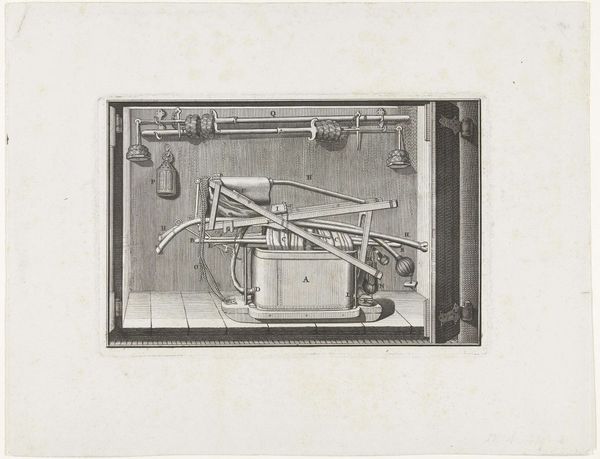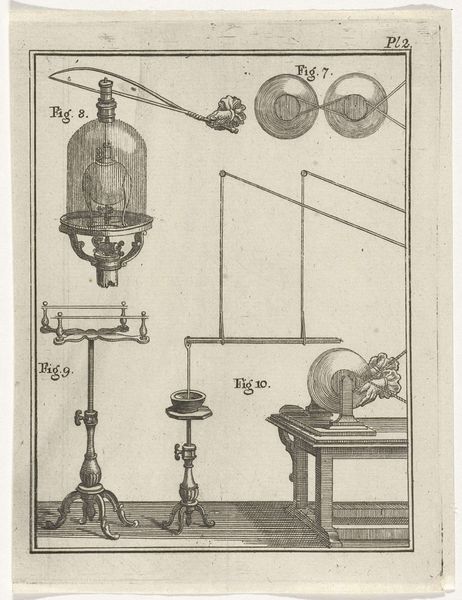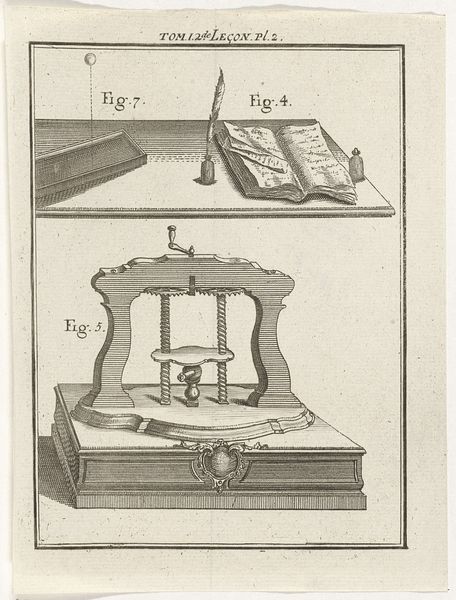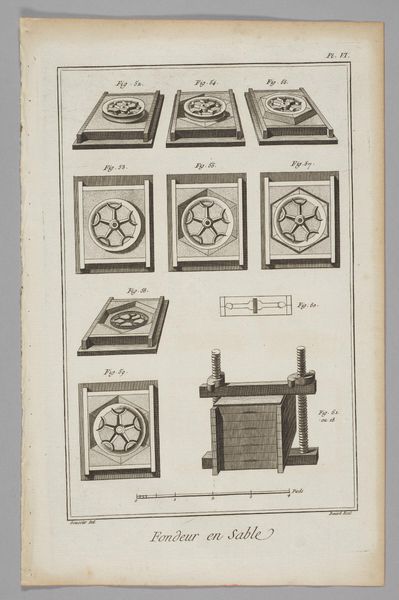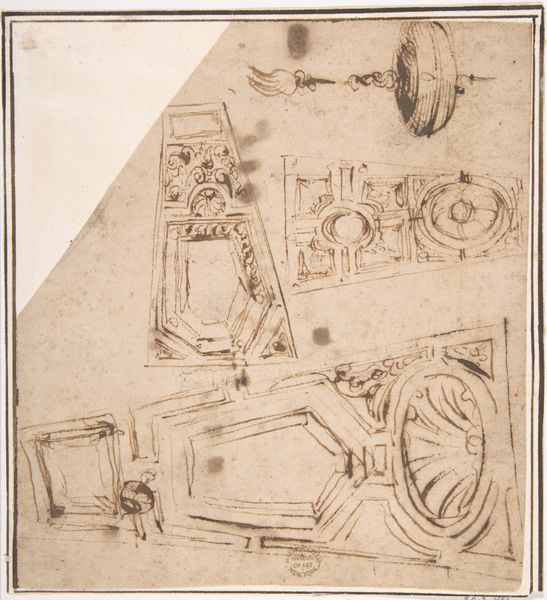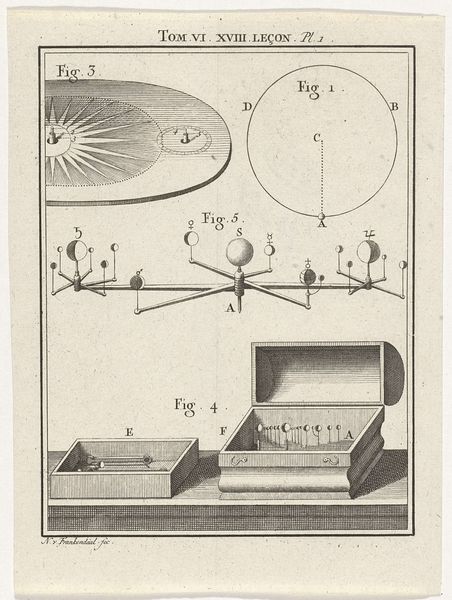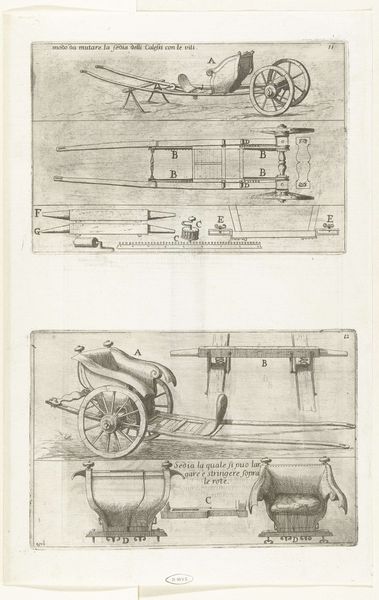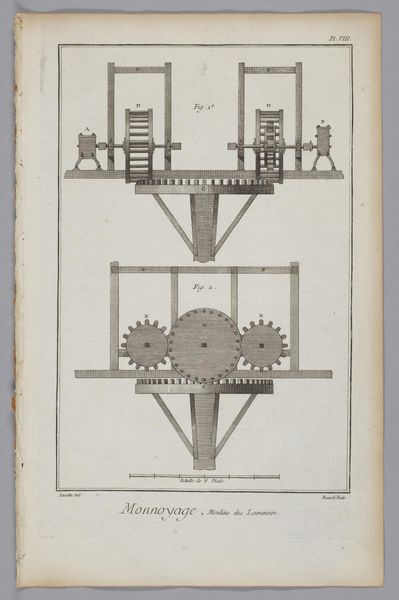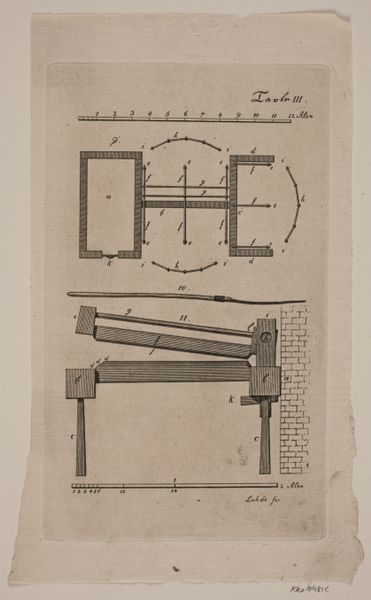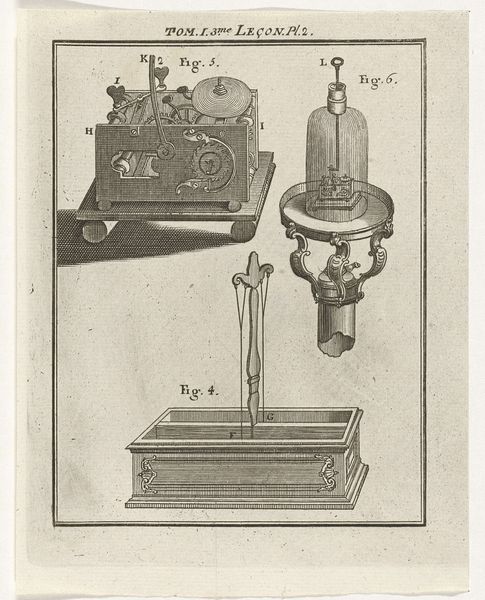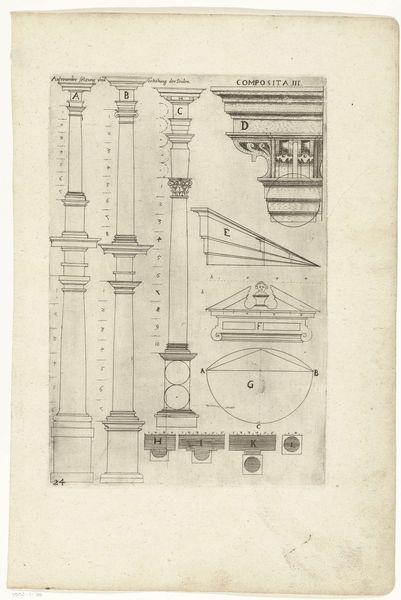
drawing, print, engraving
#
drawing
#
baroque
# print
#
line
#
history-painting
#
engraving
Dimensions: height 157 mm, width 120 mm
Copyright: Rijks Museum: Open Domain
Curator: Here we have “Natuurkundige Instrumenten,” a 1759 engraving by Nicolaas van Frankendaal, housed right here at the Rijksmuseum. What are your first thoughts? Editor: An organized explosion of scientific possibility. It’s this fascinating gridded composition depicting various instruments, but beyond the linear, it feels full of hidden potential—as if each object holds a secret to unlocking the world's mysteries. Curator: Indeed. It speaks volumes about the materiality and production of knowledge itself in the 18th century. This is printmaking, of course, a process of reproduction and dissemination, which made the depiction of these instruments more accessible to a wider audience involved with the industrial revolution. Editor: The emphasis on individual components numbered in sequence suggests a modular understanding, almost like deconstructing the very idea of science into accessible pieces. Are these instruments directly linked to particular schools of thought? The wheel apparatus in particular feels quite elemental. Curator: In a way. The engraving, through its meticulous lines and technical approach, served as an educational tool. It highlights an ambition to standardize and reproduce scientific practices through printed imagery, bringing theories of optics and electricity to artisans' and academics' workshops alike. It made specialized craftsmanship possible and encouraged experimentation in workshops on a wider scale. Editor: But don’t you also sense a cultural weight carried within these almost archaic symbols of science? Looking at these precise engravings, I feel transported to the dawn of modern thinking, a potent moment when observation was literally reinventing the cosmos. The image captures that symbolic power and its emotional intensity. Curator: Absolutely. The engraving encapsulates an ethos— a spirit of progress. Its visual economy served not only to educate but also to promote particular forms of scientific manufacturing and knowledge acquisition that had great material and economic impact. Editor: It makes one think about the layered meaning these objects carried then, versus now, and the stories embedded in each piece. I come away seeing science as almost a heroic cultural narrative, a series of visual emblems waiting to be deciphered. Curator: Precisely, seeing the world transformed through materials and experimentations, replicated as a message to disseminate ideas—an invitation, perhaps, to remake the very fabric of understanding.
Comments
No comments
Be the first to comment and join the conversation on the ultimate creative platform.
